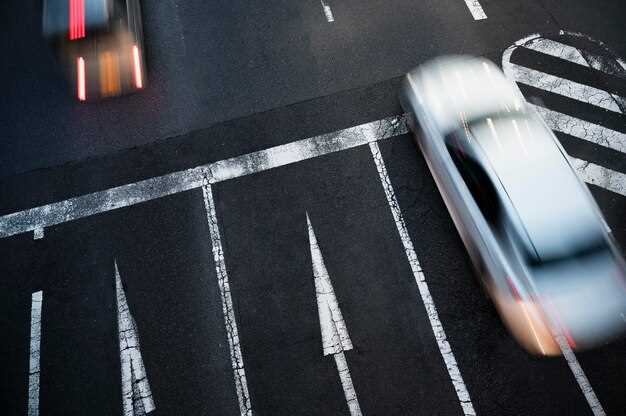
High-speed cornering is a critical aspect of performance driving that challenges both the skill of the driver and the capabilities of the vehicle. Understanding the physics involved in cornering can significantly enhance a driver’s ability to navigate turns at accelerated speeds while maintaining control and stability. The principles of force, inertia, and friction play pivotal roles in determining how effectively a vehicle can handle corners.
When a vehicle approaches a turn, several forces act upon it, including centrifugal force and gravitational force. The interaction between these forces dictates the vehicle’s trajectory and determines whether it will successfully complete the cornering maneuver or lose stability. As the speed increases, the dynamics of cornering become more complex, with the need for precise weight distribution and optimal tire performance becoming paramount.
Cornering techniques must therefore be adapted to the physics at play. Techniques such as late braking, throttle control, and steering input are all influenced by the laws of physics, necessitating a keen understanding of how to manipulate these factors to one’s advantage. By analyzing the forces at work, drivers can refine their techniques, optimizing their cornering performance while minimizing the risk of losing traction or control.
In this article, we will explore the fundamental physics behind high-speed cornering, dissecting the concepts of traction, weight transfer, and the varying effects of different driving techniques. By grasping these principles, drivers can enhance their abilities on the track and develop a deeper appreciation for the intricate relationship between physics and performance driving.
Understanding Lateral Forces and Grip Dynamics

Lateral forces play a crucial role in the dynamics of cornering, directly affecting a vehicle’s ability to maintain speed and control while navigating turns. These forces arise due to the interaction between the tires and the road, and they dictate how effectively a car can change direction at various speeds. The grip provided by tires is essential for sustaining lateral acceleration without losing traction.
When a vehicle enters a corner, the distribution of weight shifts, creating a balance between centrifugal forces and the frictional force of the tires. The maximum lateral force that can be generated before losing grip depends on several factors, including tire composition, road surface, and the vehicle’s speed. Understanding these dynamics helps in optimizing cornering techniques, allowing for smoother and faster navigation of bends.
Grip dynamics involve a complex interplay of factors such as tire pressure, tread design, and temperature, all of which influence the contact patch–the area of the tire that touches the road. A larger contact patch increases friction, enhancing grip. However, exceeding the tire’s limits can lead to understeering or oversteering, both of which can compromise cornering performance. Consequently, drivers must precisely balance speed and steering input to maintain optimal grip during cornering maneuvers.
Additionally, weight transfer during cornering affects the distribution of lateral forces. As a vehicle turns, weight shifts to the outer wheels, increasing their load and, consequently, enhancing grip at those points. Understanding this principle allows drivers to adjust their braking and steering techniques, effectively managing lateral forces for improved cornering stability.
In conclusion, a deep understanding of lateral forces and grip dynamics is vital for mastering high-speed cornering techniques. By optimizing tire performance and managing weight transfer, drivers can enhance their cornering capabilities, ensuring both speed and safety on the road.
Optimal Racing Line and Trajectory Calculations

The optimal racing line is the path taken through a corner that minimizes lap time by maximizing speed while ensuring control. Achieving this involves understanding how to balance acceleration, braking, and steering inputs. The racing line typically arcs into the corner, leading the vehicle toward the apex. The apex is the innermost point of the corner, which is critical for maximizing speed upon exit.
To calculate the optimal trajectory, drivers must consider various factors, including vehicle dynamics, corner radius, and track surface conditions. Applying principles from physics, such as centripetal force and friction, allows for precise trajectory planning. In high-speed cornering, the lateral grip of the tires plays a pivotal role. Understanding the relationship between tire forces and vehicle weight helps maintain optimal cornering performance.
Additionally, trajectory calculations may involve determining the ideal entry speed, which is vital for successfully navigating corners. Accurate entry speed ensures that the vehicle remains stable while cornering and allows for effective acceleration out of the turn. This speed is influenced by factors such as weight distribution, downforce, and tire characteristics, which must be meticulously analyzed to determine the best performance envelope.
As drivers approach a corner, they should visualize and execute the racing line through a series of calculated maneuvers. Techniques such as trail braking, where the driver maintains brake pressure while steering into the corner, can enhance turning radius and grip. Understanding the physics of weight transfer during cornering also aids in optimizing vehicle handling, allowing for better control over the racing line.
In summary, calculating the optimal racing line involves a blend of theoretical knowledge and practical skill. By applying physics principles to trajectory calculations, drivers can navigate corners more effectively, enhancing their overall performance on the racetrack.
Weight Transfer and Its Impact on Cornering Performance
Weight transfer occurs when a vehicle accelerates, brakes, or turns, causing the distribution of its mass to shift. This dynamic behavior plays a crucial role in cornering performance, as it influences tire grip and handling characteristics. Understanding the mechanics of weight transfer is essential for mastering high-speed cornering techniques.
During a turn, centrifugal forces act on the vehicle, pulling it outward. As the vehicle negotiates the corner, weight transfers from the inside tires to the outside tires. This shift increases the load on the outer tires, enhancing their grip while reducing traction on the inner tires. A skilled driver must manage this weight transfer effectively to maximize cornering performance.
Inputting steering, throttle, and braking in a precise manner can optimize weight transfer. For example, trail braking, a common technique, allows a driver to shift weight toward the front of the vehicle, increasing the front tire’s grip. This technique enables sharper turn-in and greater control during cornering.
Conversely, improper management of weight transfer can lead to oversteer or understeer. Oversteer occurs when the rear tires lose grip before the front, causing the vehicle to rotate excessively. Understeer happens when the front tires lose grip, making it difficult to steer through the corner. Both scenarios can severely impact cornering speed and overall performance.
To enhance cornering techniques, drivers can utilize suspension tuning and tire selection, which influence how weight transfer affects handling. By adjusting suspension stiffness and ride height, drivers can control how weight shifts during cornering, which can lead to improved stability and responsiveness.
In summary, weight transfer is a fundamental aspect of cornering performance that requires careful consideration. Mastering the technique of managing weight transfer enables drivers to navigate corners effectively and maximize their vehicle’s potential.












